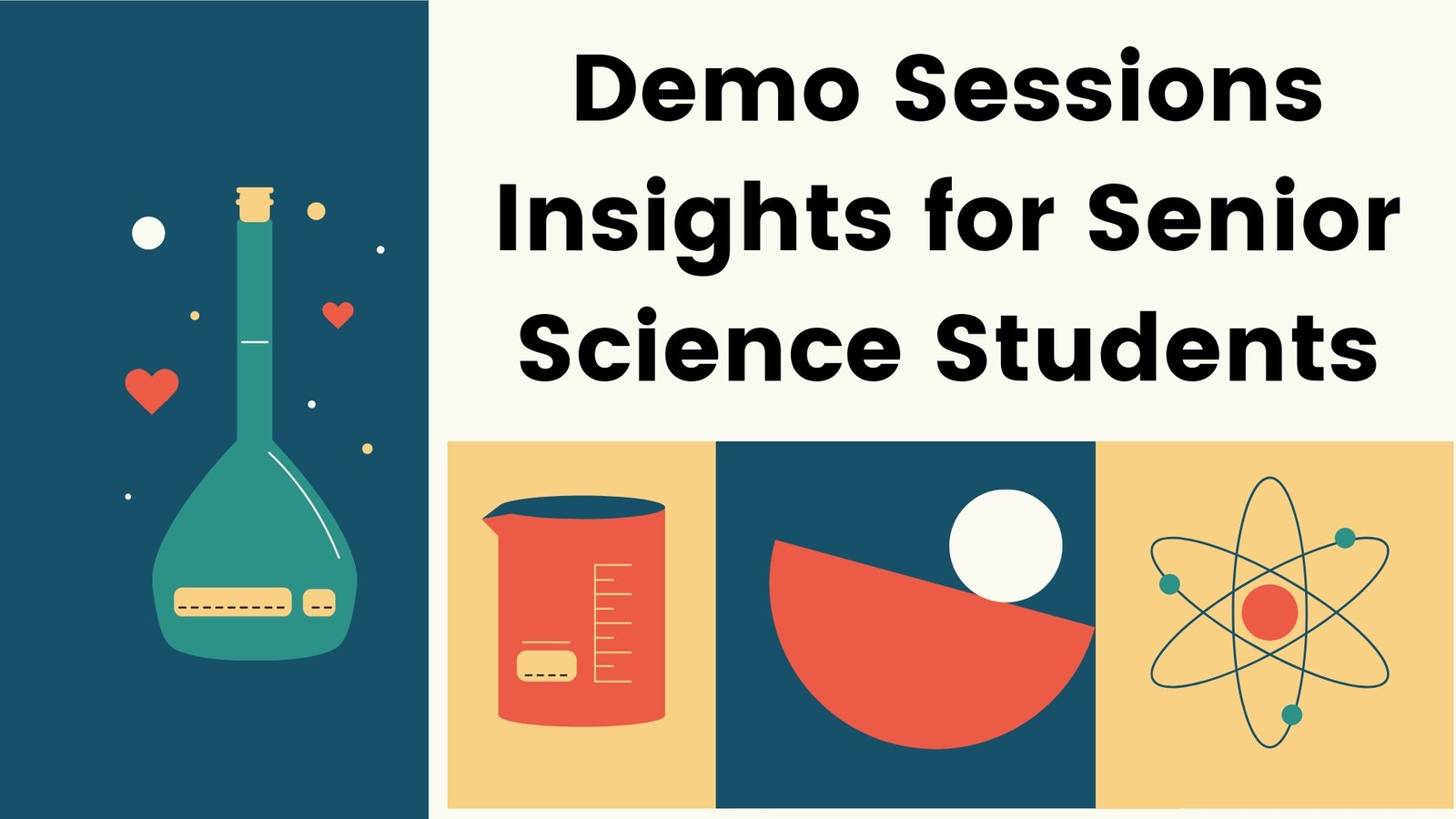

Demo Session Insights for Senior Science Students
Teaching science to senior students can be both rewarding and challenging. However, a well-executed demo session can greatly enhance students’ understanding and engagement. In this blog, several effective strategies will be outlined to help you conduct demo sessions that captivate and educate senior students. By following these tips, you can make your science lessons more interactive and enjoyable.
Understanding the Importance of Demo Sessions
Demo sessions play a crucial role in science education. They give students the chance to see scientific concepts in action. This hands-on learning approach helps students connect what they learn in theory with real-world applications. Moreover, demos can spark curiosity and encourage students to explore scientific phenomena more deeply. As a result, students become more engaged and interested in the subject matter.
Planning Your Demo Session
Effective planning is key for a successful demo session. First, it’s important to set clear objectives that match the curriculum. By deciding which concepts to demonstrate, teachers can keep the session focused and relevant. Additionally, getting materials ready ahead of time prevents last-minute problems.
Finally, a well-structured plan enables smooth transitions between different parts of the demo. With proper planning, the session will run more smoothly and achieve its intended goals.

Want more details about the demo classes? Visit this blog on our website: Creating an Engaging Demo Class.
Engaging Presentation Techniques
Captivating presentation techniques can greatly boost student engagement. For example, using storytelling makes scientific concepts more relatable and easier to understand. When a demo is framed around a real-world application, students can see how the material is relevant to their lives.
Additionally, incorporating multimedia elements, like videos or animations, can enrich the presentation. These tools not only make the lesson more interesting but also cater to different learning styles. As a result, students are more likely to connect with the content, promoting inclusivity and ensuring that everyone can participate in the learning experience.
Utilizing the Demonstration Method
The demonstration method is very effective in science education because it lets students see processes and outcomes firsthand. This visual experience helps them understand complex concepts more easily. During the demo, it is important to explain each step clearly so that students can follow along. When teachers provide reasons for each action, it deepens students’ understanding and helps them connect theory with practice.
Moreover, encouraging students to ask questions during the demonstration creates a friendly learning environment. This interaction not only clears up any confusion but also encourages critical thinking. When students feel comfortable asking questions, they become more engaged and interested in the lesson. Overall, using the demonstration method well can lead to a more rewarding educational experience. It helps students build a stronger foundation in scientific concepts and inspires their curiosity about the world around them.
Creating a Safe Learning Environment
Safety should always be a priority in science demos. Before conducting any experiments, it is essential to review safety protocols with students. This includes proper handling of materials and understanding potential hazards. By fostering a culture of safety, students can focus on learning without unnecessary distractions. Additionally, demonstrating safe practices reinforces the importance of safety in scientific endeavors.
Encouraging Student Participation
Active participation greatly improves the learning experience during demo sessions. When students take part in the demonstration, the session becomes more interactive and fun. For example, teachers can ask students to help with the demo or encourage them to guess what will happen before starting experiments. This involvement keeps students focused and interested in the lesson.
In addition, engaging students in this way not only strengthens their learning but also builds their confidence. When students contribute to the demonstration, they feel important and capable. This feeling of participation encourages them to share their thoughts and ideas during science discussions. As a result, students become more willing to explore concepts and ask questions. Overall, active participation turns demo sessions into exciting learning experiences, helping students gain a better understanding of scientific principles while boosting their confidence in their abilities.
Summarize Key Takeaways
At the end of the demo session, it is important to summarize the key points. This recap helps reinforce what students have learned and clears up any confusion. By reviewing the main ideas, students can better remember the information. It also gives teachers a chance to connect the demo to the larger curriculum, showing how the concepts fit into what they are studying.
Additionally, encouraging students to reflect on the session can promote critical thinking. Asking questions like “What did you find interesting?” or “How can you apply this knowledge?” helps students think deeply about the material. This reflection not only strengthens their understanding but also helps them retain the information better. Overall, a good summary and reflection at the end of the demo session create a valuable learning experience, allowing students to fully grasp the concepts and see their relevance in the bigger picture.
Collect the Feedback
Collecting feedback from students is a great way to understand how effective the demo session was. Simple methods, like exit tickets or quick surveys, can help measure students’ understanding and engagement. These tools allow students to share their thoughts about what they learned and how they felt during the session. By gathering this feedback, teachers can see what worked well and what could be improved.
Moreover, this feedback can guide teachers in planning future sessions. When teachers know what students enjoyed or struggled with, they can adjust their teaching methods to better meet students’ needs. For example, if many students found a concept confusing, the teacher can spend more time on it next time. Overall, collecting feedback creates a cycle of improvement, helping teachers create better learning experiences and ensuring that students get the most out of their science education.
Visit our WhatsApp channel to get more job updates. Here is the link of the WhatsApp channel. Click here to visit.
Conclusion
In conclusion, mastering science demo sessions takes careful planning, engaging presentation techniques, and a focus on safety and participation. By understanding the importance of these elements, teachers can create meaningful learning experiences for senior students. When demos are well-planned and interactive, they can capture students’ interest and help them learn better.
As you think about these ideas, consider how you can use them in your next demo session. Remember, the main goal is to inspire curiosity and a love for science in your students. Make your demo sessions not just informative but also fun and memorable. Embrace the challenge of improving your teaching methods, and you will see your students thrive. By creating an engaging and safe learning environment, you can help students develop a deeper understanding of science and encourage them to explore the world around them.
Barkha Sachdeva is a B.Com(Hons) graduate from Delhi University. Passionate about crafting content, she enjoys writing about fashion, beauty, technology, and travel. With three years of content writing experience, she possesses valuable insights and ideas in these domains.







Post Comment